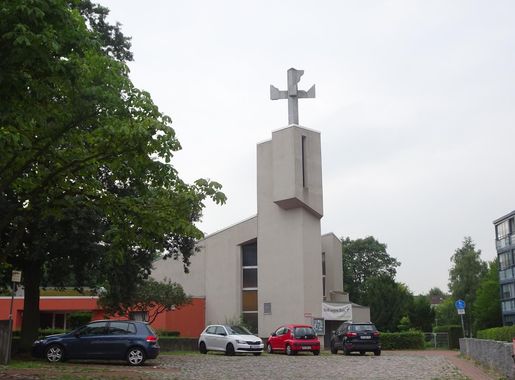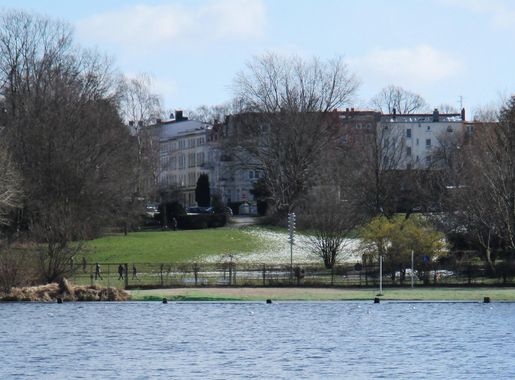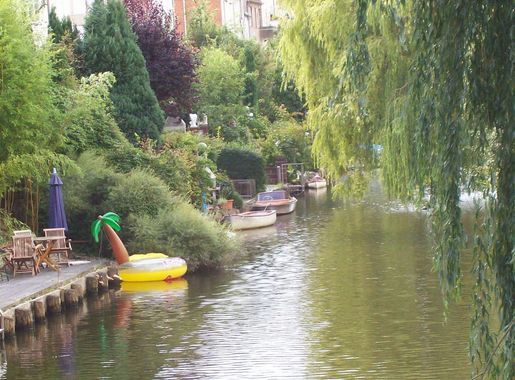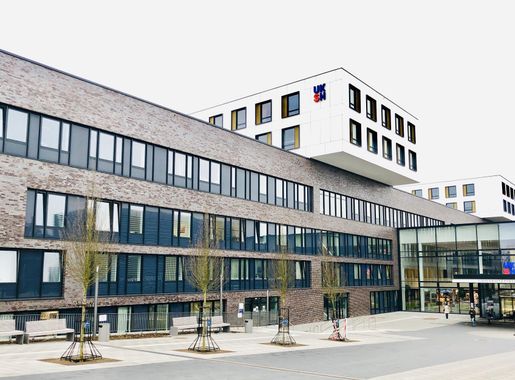
The Historic Charm of St. Jürgen in Lübeck
Discover the medieval charm and tranquil green spaces of St. Jürgen in Lübeck, a perfect blend of history, nature, and vibrant student life.
Nestled in the southern part of the historic city of Lübeck, St. Jürgen offers tourists a serene escape with a touch of medieval charm. This picturesque neighbourhood is rich in history, dating back to the 13th century, and boasts an array of well-preserved buildings and vibrant green spaces. Stroll along the charming streets lined with half-timbered houses and discover the unique blend of medieval architecture and modern amenities. The University of Lübeck adds a youthful energy to the area, making it a lively spot for students and visitors alike. Don't miss the stunning St. Jürgen Chapel, a beautiful example of Gothic architecture that stands as a testament to the neighbourhood's rich heritage. For nature lovers, St. Jürgen features the lush Drägerpark, perfect for leisurely walks or picnics by the river Wakenitz. This tranquil park provides a peaceful retreat from the hustle and bustle of city life, offering stunning views and a chance to reconnect with nature. Additionally, the nearby Lübeck Botanical Garden is a must-visit for those interested in exploring diverse plant species and beautifully landscaped gardens.
Local tips in St. Jürgen
- Visit the St. Jürgen Chapel early in the morning to avoid crowds and enjoy the peaceful atmosphere.
- Pack a picnic and spend a relaxing afternoon in Drägerpark by the river Wakenitz.
- Wear comfortable walking shoes to explore the cobblestone streets and historic buildings of St. Jürgen.
- Check out the University of Lübeck's event calendar for public lectures and cultural events.
- Don't forget your camera to capture the picturesque half-timbered houses and scenic views in the neighbourhood.
The Historic Charm of St. Jürgen in Lübeck
Nestled in the southern part of the historic city of Lübeck, St. Jürgen offers tourists a serene escape with a touch of medieval charm. This picturesque neighbourhood is rich in history, dating back to the 13th century, and boasts an array of well-preserved buildings and vibrant green spaces. Stroll along the charming streets lined with half-timbered houses and discover the unique blend of medieval architecture and modern amenities. The University of Lübeck adds a youthful energy to the area, making it a lively spot for students and visitors alike. Don't miss the stunning St. Jürgen Chapel, a beautiful example of Gothic architecture that stands as a testament to the neighbourhood's rich heritage. For nature lovers, St. Jürgen features the lush Drägerpark, perfect for leisurely walks or picnics by the river Wakenitz. This tranquil park provides a peaceful retreat from the hustle and bustle of city life, offering stunning views and a chance to reconnect with nature. Additionally, the nearby Lübeck Botanical Garden is a must-visit for those interested in exploring diverse plant species and beautifully landscaped gardens.
Iconic landmarks you can’t miss
Museum Holstentor
Explore the historic Museum Holstentor in Lübeck, a stunning Gothic landmark showcasing the city's rich maritime heritage and culture.

Holstentor square
Discover Lübeck's historical gem at Holstentor Square, where medieval architecture meets vibrant local culture in a picturesque setting.
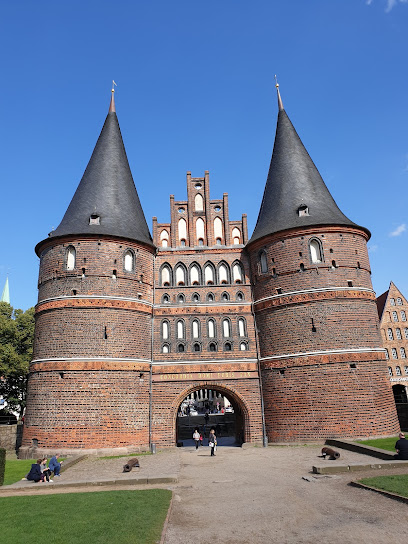
Lübeck Cathedral
Explore Lübeck Cathedral: A historical gem showcasing stunning architecture and rich cultural heritage in the heart of Lübeck's old town.

Burgtor
Discover the historical charm of Burgtor, Lübeck's iconic gateway showcasing stunning medieval architecture and rich cultural heritage.
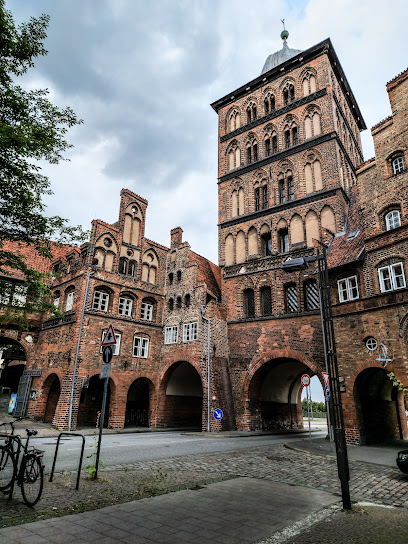
Salzspeicher
Discover the architectural beauty and historical significance of Salzspeicher, a UNESCO World Heritage Site in Lübeck's enchanting Altstadt.

Kaisertor
Discover the majestic Kaisertor, a historical landmark in Lübeck that showcases the city's rich medieval heritage and architectural beauty.
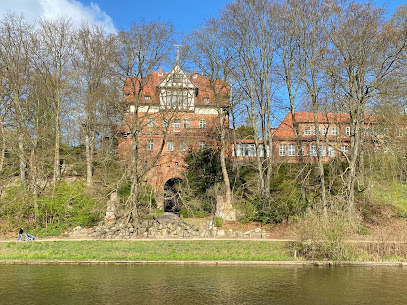
Burgkloster Monasterio del Castillo
Discover the captivating history and stunning architecture of Burgkloster Monasterio del Castillo, a must-see tourist attraction in Lübeck.
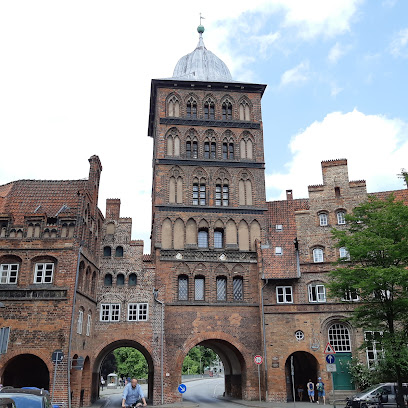
Zöllnerhaus
Uncover the architectural beauty and rich history of Zöllnerhaus in Lübeck's charming Old Town, a must-see for every traveler.
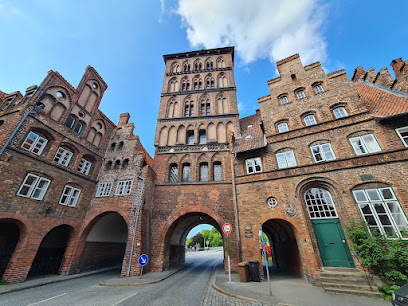
Jerusalemsberg
Discover the historical and architectural beauty of Jerusalemsberg in Lübeck, a landmark that embodies the rich heritage of this enchanting city.
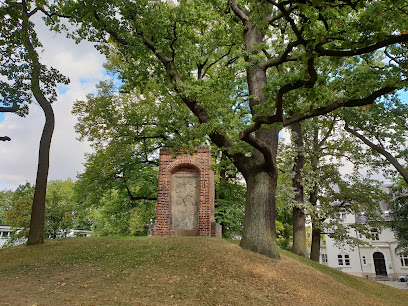
Palais Rantzau - ein Haus der Deutschen Stiftung Denkmalschutz
Explore Palais Rantzau in Lübeck, a historical landmark showcasing exquisite architecture and rich cultural history, nestled in a UNESCO World Heritage site.
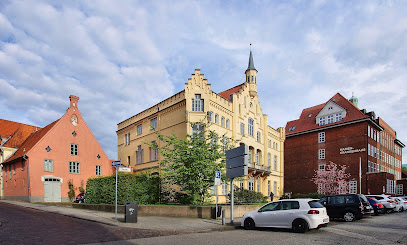
Halbturm
Experience the enchanting Halbturm, a historic tower in Lübeck's Altstadt, where medieval architecture meets a vibrant cultural atmosphere.

Predigerhaus von St. Aegidien
Explore the historical marvel of Predigerhaus von St. Aegidien in Lübeck, a UNESCO World Heritage site showcasing the city's medieval architecture and rich cultural heritage.
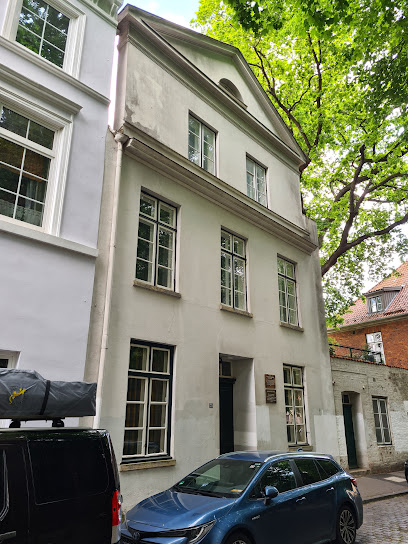
Hundebadestelle St. Jürgen
Discover the enchanting Hundebadestelle St. Jürgen, a historical landmark in Lübeck offering tranquil waterfront views and rich maritime heritage.
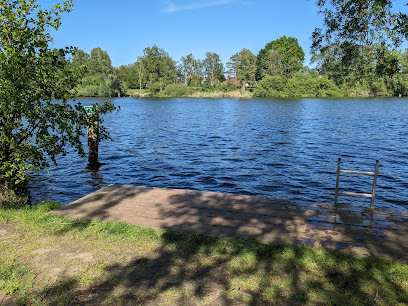
Unmissable attractions to see
Museum Holstentor
Explore the rich history of Lübeck at Museum Holstentor, an iconic landmark showcasing the city's medieval architecture and cultural heritage.
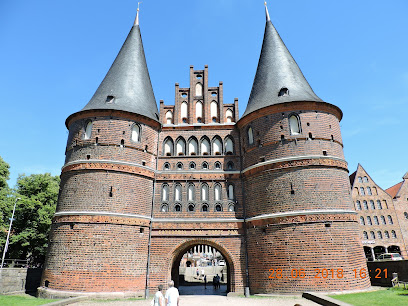
Museumsquartier St. Annen
Explore the cultural heart of Lübeck at Museumsquartier St. Annen, a must-visit art museum showcasing stunning collections and exhibitions.
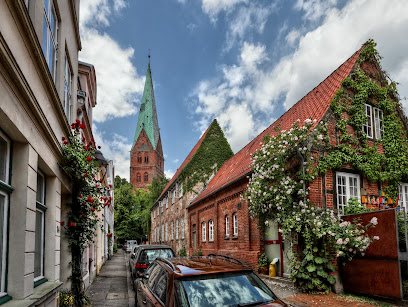
Salzspeicher
Explore Lübeck's Salzspeicher, a historical landmark that showcases the city's rich maritime heritage and architectural beauty, a must-see for all visitors.
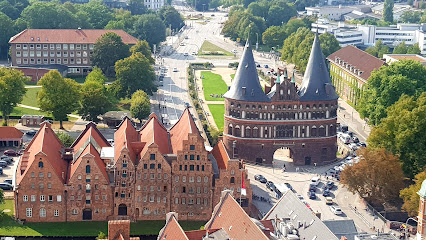
Museum Behnhaus Drägerhaus
Discover the artistic legacy of Northern Germany at the Museum Behnhaus Drägerhaus, a stunning museum in Lübeck showcasing exquisite 19th and 20th-century art.
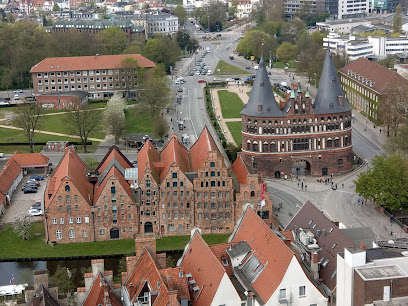
Burgkloster Monasterio del Castillo
Explore the Burgkloster Monastery in Lübeck, a stunning medieval architectural marvel steeped in history and charm.
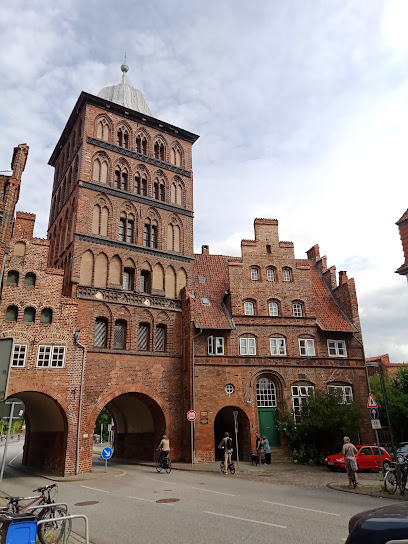
Goldfischbrunnen
Experience the whimsical charm of Goldfischbrunnen in Lübeck, where art and nature unite in a delightful tourist attraction.

Molchteich
Discover the tranquil charm of Molchteich in Lübeck, a serene pond surrounded by lush greenery, perfect for peaceful walks and nature appreciation.
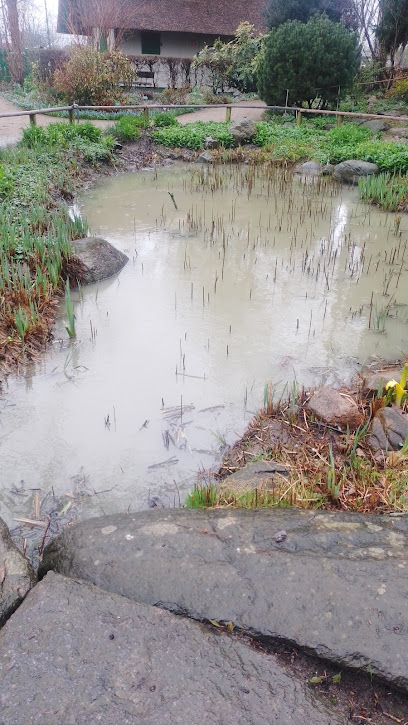
Steingarten im Schulgarten
Discover the tranquil beauty of the Steingarten im Schulgarten in Lübeck, a perfect escape for nature lovers and tranquility seekers.
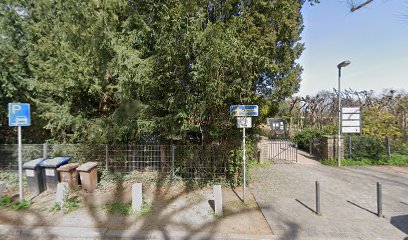
Essential places to dine
Lübecker Kartoffelkeller
Experience authentic German cuisine at Lübecker Kartoffelkeller - where tradition meets taste in the heart of Lübeck.
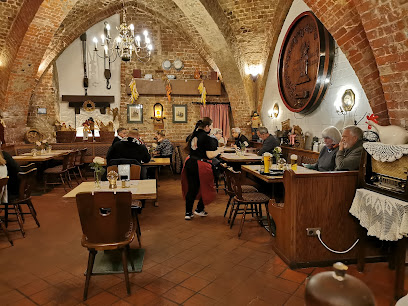
Ratskeller zu Lübeck
Savor authentic German cuisine in the charming setting of Ratskeller zu Lübeck, where tradition meets taste.
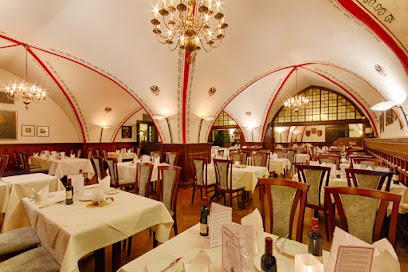
Potters Restaurant
Experience authentic German cuisine at Potters Restaurant in Lübeck’s enchanting Old Town - where tradition meets modern taste.
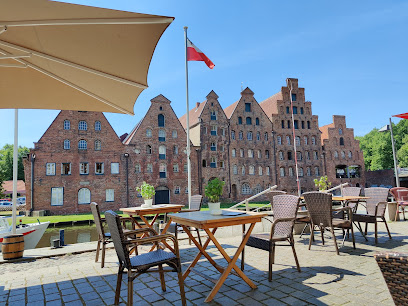
Müggenbusch
Experience authentic German cuisine and cozy hospitality at Müggenbusch, your go-to destination in Lübeck for food and relaxation.
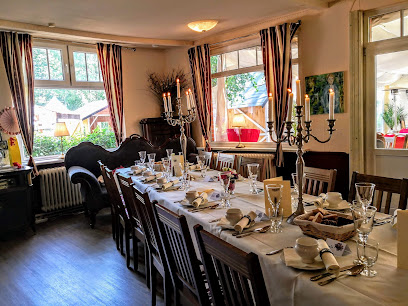
Lübecker Hanse - Lübeck
Experience exquisite German cuisine fused with modern tapas at Lübecker Hanse, where tradition meets innovation in the heart of Lübeck.
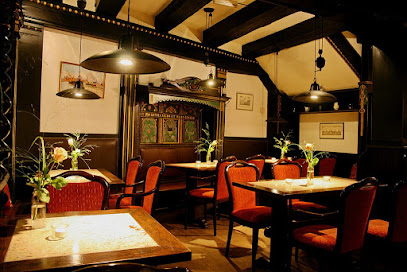
Restaurant Lübke's Speicher - Lübeck
Experience the culinary delights of Lübeck at Restaurant Lübke's Speicher - where tradition meets modern flavor.
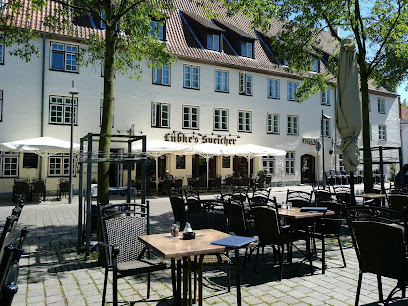
Restaurant Schlumachers
Experience culinary excellence at Restaurant Schlumachers in Lübeck's historic Altstadt - where local flavors meet modern cuisine.
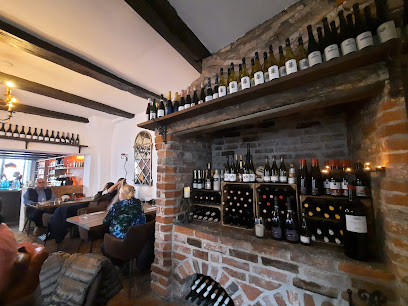
Restaurant VAI - Lübeck
Experience exquisite dining at Restaurant VAI in Lübeck's historic Altstadt, where local flavors meet modern culinary artistry.
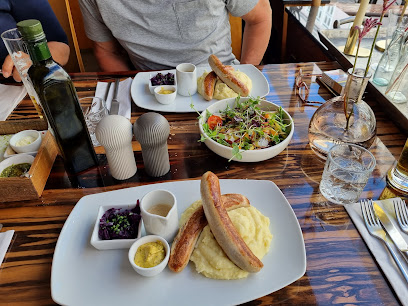
Ristorante San Michele
Experience authentic Italian cuisine at Ristorante San Michele in Lübeck - where tradition meets flavor in every dish.

Kolosseum Stube
Savor authentic German cuisine at Kolosseum Stube in Lübeck, where fresh seafood meets traditional flavors in a cozy atmosphere.
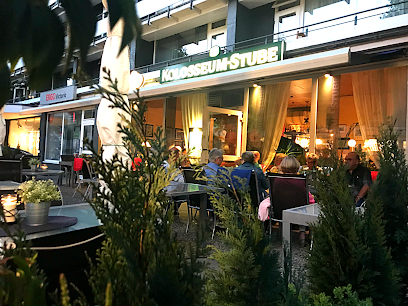
Markets, malls and hidden boutiques
Vintage Vogue - Retro Boutique
Discover unique vintage clothing and accessories at Vintage Vogue, a retro boutique in Lübeck's charming Old Town, perfect for fashion enthusiasts.
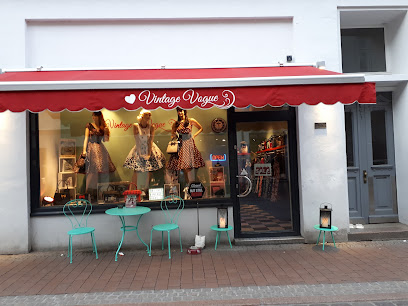
Between
Discover the trendiest clothing styles at Between in Lübeck's historic Altstadt, where modern fashion meets local charm.
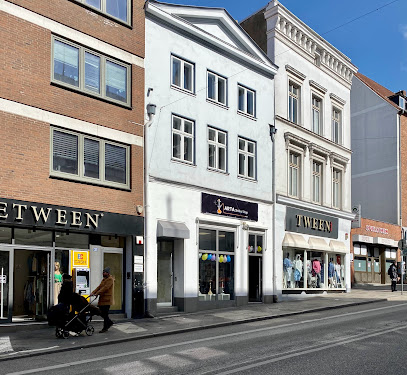
Lübeck Laden
Explore Lübeck Laden for unique gifts and souvenirs that capture the spirit of Lübeck and make your visit unforgettable.
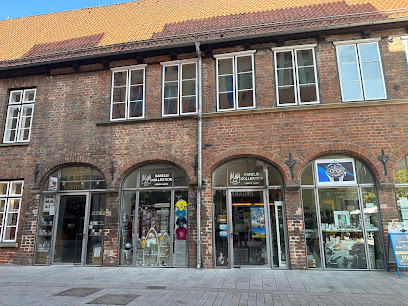
Elfenreich
Discover unique fashion treasures at Elfenreich, a charming clothing store in Lübeck's historic Altstadt, offering a delightful shopping experience.
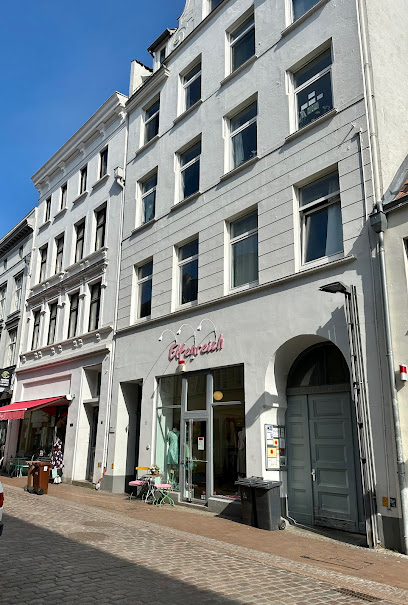
Cyroline
Explore the latest fashion trends at Cyroline, Lübeck's premier clothing store, known for its stylish collections and friendly service.
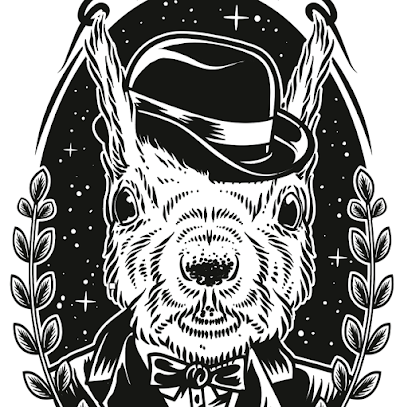
HERZENSWUNSCH concept store
Explore HERZENSWUNSCH concept store in Lübeck for unique gifts, local artistry, and a taste of vibrant culture.
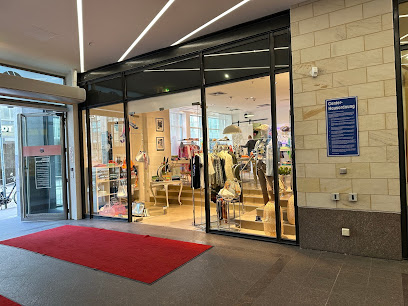
Bestway
Explore stylish clothing and unique fashion finds at Bestway, a premier clothing store in the heart of Lübeck, perfect for every fashion enthusiast.
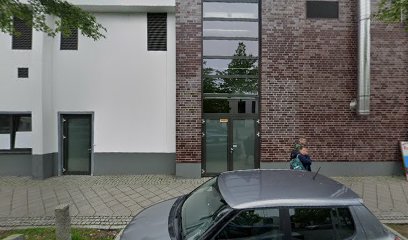
Julestjerne lubeck
Explore Julestjerne Lübeck for unique local crafts and authentic souvenirs that capture the spirit of this historic German city.
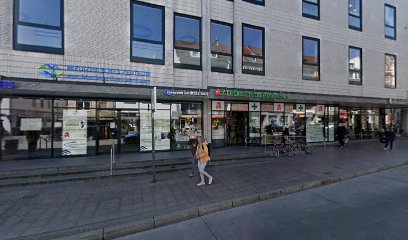
Handelsagentur TopStoreShop
Explore technology at Handelsagentur TopStoreShop in Lübeck, a digital shopping paradise for gadgets, accessories, and expert advice.
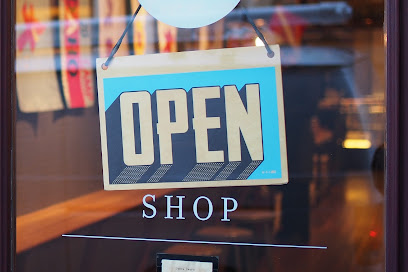
CALINIEFASHION
Explore CALINIEFASHION in Lübeck for the latest trends and unique clothing pieces that reflect your personal style for every occasion.

Essential bars & hidden hideouts
Dietrich's Bar - Luebeck
Discover Dietrich's Bar in Lübeck, where a warm atmosphere, great drinks, and local culture await every visitor.
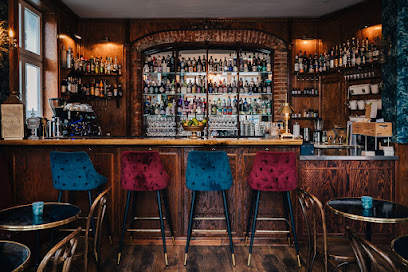
Funambules - Lübeck
Discover the lively ambiance of Funambules in Lübeck, where great music meets delicious food in a vibrant atmosphere.
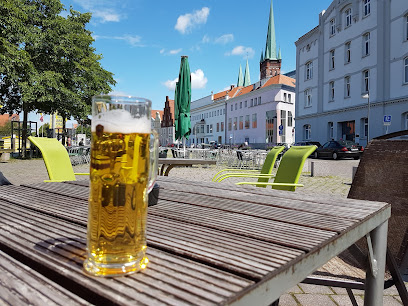
Tonfink - Kulturcafé & Bar - Lübeck
Discover Tonfink, Lübeck's vibrant kulturcafé & bar, where local culture meets great food, drinks, and live music in a cozy atmosphere.
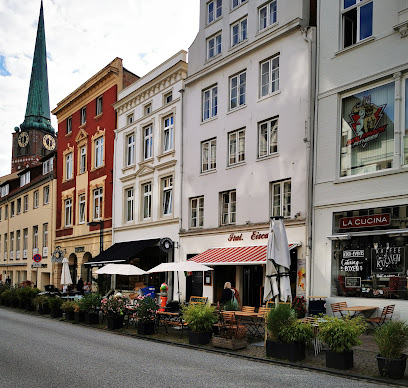
Sternschnuppe Lübeck
Experience the vibrant bar culture of Lübeck at Sternschnuppe, where good drinks and great company await in a cozy atmosphere.
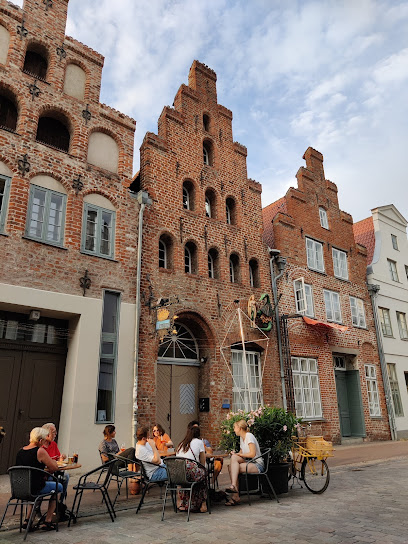
Torrio's - American Bar
Discover Lübeck's nightlife at Torrio's American Bar – where vibrant drinks and a lively atmosphere create unforgettable moments.
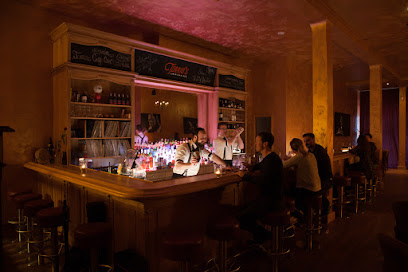
Bar 112 - Lübeck
Experience the vibrant atmosphere of Bar 112 in Lübeck, where locals and tourists come together to enjoy an impressive selection of drinks in a charming setting.
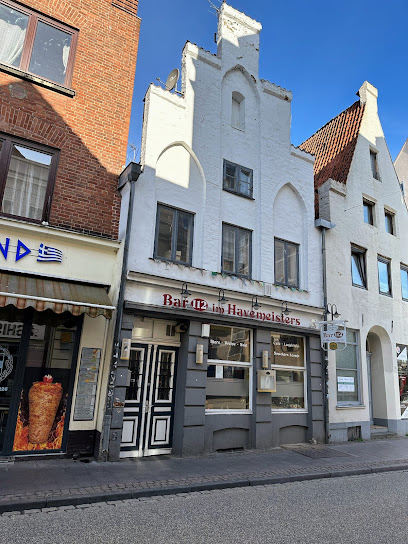
sZiggy's Bar
Discover the charm of Lübeck at sZiggy's Bar, where cozy ambiance meets a diverse drink selection in the heart of the city.
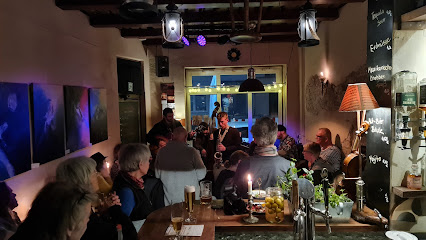
Rauchfang - Lübeck
Experience the vibrant nightlife at Rauchfang, a charming pub in Lübeck's historic Altstadt, perfect for unwinding with friends.
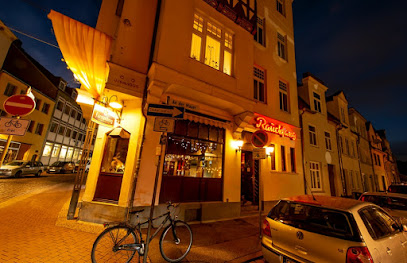
Allegro Bar Svetlana Töbe
Discover the vibrant nightlife and welcoming atmosphere at Allegro Bar in Lübeck, where every night is a celebration of good drinks and great company.
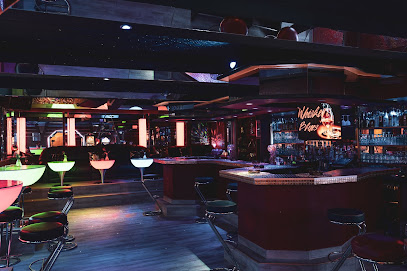
Cocoloco Bar - Lübeck
Discover the vibrant nightlife of Lübeck at Cocoloco Bar, where unforgettable evenings come alive with drinks, music, and a lively crowd.
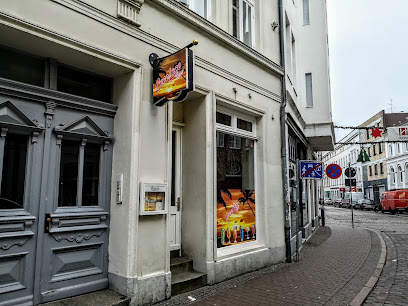
Local Phrases
-
- HelloHallo
[hah-loh] - GoodbyeAuf Wiedersehen
[owf vee-der-zay-en] - YesJa
[yah] - NoNein
[nine] - Please/You're welcomeBitte
[bih-teh] - Thank youDanke
[dahn-keh] - Excuse me/SorryEntschuldigung
[ent-shool-dee-goong] - How are you?Wie geht es dir?
[vee gayt es deer] - Fine. And you?Gut. Und dir?
[goot oont deer] - Do you speak English?Sprechen Sie Englisch?
[shpre-khen zee eng-leesh] - I don't understandIch verstehe nicht
[eekh fair-shtay-eh nikht]
- HelloHallo
-
- I'd like to see the menu, pleaseIch möchte bitte die Speisekarte sehen
[eekh merkhteh bitt-eh dee shpahy-zuh-kahr-tuh zay-en] - I don't eat meatIch esse kein Fleisch
[eekh ess-eh kine fly-sh] - Cheers!Prost!
[prohst] - I would like to pay, pleaseIch möchte bitte bezahlen
[eekh merkhteh bitt-eh beh-tsal-ehn]
- I'd like to see the menu, pleaseIch möchte bitte die Speisekarte sehen
-
- Help!Hilfe!
[hil-fuh] - Go away!Gehen Sie weg!
[geh-en zee vehg] - Call the Police!Rufen Sie die Polizei!
[roo-fen zee dee poh-lee-tsai] - Call a doctor!Rufen Sie einen Arzt!
[roo-fen zee ine-en ahrtst] - I'm lostIch habe mich verlaufen
[eekh hah-buh meesh fair-lah-oo-fen] - I'm illIch bin krank
[eekh been krunk]
- Help!Hilfe!
-
- I'd like to buy...Ich möchte ... kaufen
[eekh merkhteh ... kow-fen] - I'm just lookingIch schaue nur
[eekh shau-eh noor] - How much is it?Wie viel kostet es?
[vee feel kohst-et es] - That's too expensiveDas ist zu teuer
[dahs ist tsoo toy-er] - Can you lower the price?Können Sie den Preis senken?
[kern-en zee den price zehn-ken]
- I'd like to buy...Ich möchte ... kaufen
-
- What time is it?Wie spät ist es?
[vee shpayt ist es] - It's one o'clockEs ist ein Uhr
[es ist ine oor] - Half past (10)Halb zehn
[halb tsayn] - MorningMorgen
[mohr-gen] - AfternoonNachmittag
[nahkh-mit-tahg] - EveningAbend
[ah-bent] - YesterdayGestern
[geh-stern] - TodayHeute
[hoi-teh] - TomorrowMorgen
[mohr-gen] - 1eins
[ine-s] - 2zwei
[tsvai] - 3drei
[dry] - 4vier
[feer] - 5fünf
[foonf] - 6sechs
[zeks] - 7sieben
[zee-ben] - 8acht
[ahkt] - 9neun
[noyn] - 10zehn
[tsayn]
- What time is it?Wie spät ist es?
-
- Where's a/the...?Wo ist ein/der...?
[voh ist ine/dehr] - What's the address?Was ist die Adresse?
[vahs ist dee ah-dreh-suh] - Can you show me (on the map)?Können Sie mir das zeigen (auf der Karte)?
[kern-en zee meer dahs tsay-gen (owf dehr kahr-tuh)] - When's the next (bus)?Wann kommt der nächste (Bus)?
[vahn kohmt dehr naykh-stuh (boos)] - A ticket (to ....)Eine Fahrkarte (nach ....)
[ine-uh fahr-kahr-tuh (nahkh)]
- Where's a/the...?Wo ist ein/der...?
History of St. Jürgen
-
St. Jürgen, originally a part of the medieval city of Lübeck, began to take shape in the 13th century as the town expanded beyond its fortified walls. The area was named after the St. Jürgen Church, which became a focal point of the community. This neighbourhood served as a gateway for traders and merchants, reflecting Lübeck's status as a major Hanseatic city.
-
As Lübeck became a powerful member of the Hanseatic League during the 14th century, St. Jürgen played an essential role in trade and commerce. The neighbourhood's proximity to the city center facilitated the establishment of warehouses and trading posts, making it a bustling hub for merchants from across Northern Europe.
-
During the Protestant Reformation in the 16th century, St. Jürgen was influenced by the religious changes sweeping through Lübeck. The St. Jürgen Church became a Protestant place of worship, symbolizing the shift in the spiritual landscape of the region. This transition marked a significant cultural transformation, as the community adapted to new religious practices and beliefs.
-
The 19th century saw significant industrial growth in St. Jürgen, with the establishment of factories and mills that contributed to Lübeck's economic expansion. The neighbourhood became increasingly urbanized, with new residential areas arising to accommodate the growing workforce. This industrial boom helped solidify Lübeck's role as a key economic center in northern Germany.
-
After World War II, St. Jürgen underwent a period of reconstruction as the city rebuilt from the devastation of war. The neighbourhood adapted to modern needs while preserving its historical character. Today, St. Jürgen is a vibrant area that blends historical architecture with contemporary life, reflecting Lübeck's rich cultural heritage and ongoing evolution.
St. Jürgen Essentials
-
St. Jürgen is easily accessible from other neighbourhoods in Lübeck. If you are coming from the city center, you can take bus lines 6 or 7 from the Lübeck ZOB (central bus station) which will take you directly to St. Jürgen. Alternatively, the Lübeck Hauptbahnhof (main train station) is nearby, and you can catch a bus from there. If you're arriving by car, St. Jürgen is well-connected via the A1 motorway, with ample parking available in the area.
-
St. Jürgen is well-served by public transportation. The local bus network connects various parts of the neighbourhood, making it easy to get around. You can also rent a bicycle from one of the local shops, as Lübeck is a bicycle-friendly city with many dedicated lanes. For a more scenic route, consider walking; many attractions are within a reasonable distance from each other.
-
St. Jürgen is generally safe for tourists, but like any urban area, it's wise to stay vigilant. Avoid poorly lit streets at night and be cautious of pickpockets in crowded places. While there are no specific high-crime areas in St. Jürgen, it is advisable to remain alert, especially in areas close to public transport hubs.
-
In case of an emergency, dial 112 for immediate assistance. This number will connect you to police, fire, and medical services. The nearest hospital is the Universitätsklinikum Schleswig-Holstein, located a short distance from St. Jürgen. It is also advisable to have travel insurance that covers medical emergencies.
-
Fashion: Do dress comfortably for walking, but be mindful of local customs in religious sites. Avoid extremely casual attire like swimsuits outside of beach areas. Religion: Do be respectful when visiting churches, and consider covering your shoulders. Public Transport: Do validate your ticket before boarding and give up your seat for elderly passengers. Don't eat or drink on public transport. Greetings: Do greet locals with a friendly 'Hallo' or 'Guten Tag'. Don't be overly formal; a smile goes a long way. Eating & Drinking: Do try local specialties like marzipan and Lübeck's beer. Don't refuse food or drink offered to you, as it's seen as impolite.
-
To experience St. Jürgen like a local, visit the nearby parks such as the Drägerpark for a relaxing walk or a picnic. Engage with locals at the weekly markets for fresh produce and traditional German snacks. Explore the small cafés to enjoy a slice of Lübeck's famous marzipan cake. Don't miss the local events, which are often listed in community boards or local websites, providing an opportunity to immerse yourself in the culture.
Trending Landmarks in St. Jürgen
Nearby Cities to St. Jürgen
-
Things To Do in Hamburg
-
Things To Do in Rostock
-
Things To Do in Sønderborg
-
Things To Do in Bremen
-
Things To Do in Nyborg
-
Things To Do in Næstved
-
Things To Do in Hannover
-
Things To Do in Odense
-
Things To Do in Slagelse
-
Things To Do in Kolding
-
Things To Do in Køge
-
Things To Do in Ribe
-
Things To Do in Kalundborg
-
Things To Do in Roskilde
-
Things To Do in Vejle

